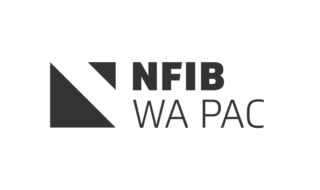October 30, 2022
Key Contests Will Decide Legislative Majorities
While every voter in Oregon will help decide this year’s ultra-competitive three-way race for governor, it’s voters in several key legislative districts that will likely determine whether Oregon’s new chief executive will be working with Democrat or Republican majorities in the next legislative session.
We hope Oregon’s new governor will be Christine Drazan, who has received the endorsement of NFIB’s Oregon PAC, and holds a slight lead over her opponents as voters continue to turn in their ballots between now and November 8. Having a pro-small business governor would be a game-changer for our members in Oregon, but having a legislature working with her, instead of against her, would be even better.
Currently, Oregon is one of 14 states with a Democratic trifecta – that’s when one party controls the office of governor, the state senate, and the state house. It’s been that way in Oregon since Democrats regained sole control of the House of Representatives in the 2012 General Election after sharing power with Republicans for two years when the chamber was split evenly – 30 Democrats and 30 Republicans.
For the last decade, Democrat majorities have been able to work with Democrat governors to achieve nearly every policy goal of legislative leadership. For the last four years, Democrats in the legislature have enjoyed supermajorities in both chambers – meaning one party controls three-fifths of the chambers’ seats. All revenue raising bills must pass with a three-fifths supermajority vote, which Democrats have been able to do on their own during the last several legislative sessions.
But this year, things look a little different. This is due to several contributing factors, most notably, the redistricting process that happens once every 10 years, and what appears to be a nationwide political climate that favors change. Democrats are not just defending their hold on Oregon’s governorship, but also their legislative majorities – and voters in a few specific legislative districts will play an outsized role in the outcome of this election because of district competitiveness. Each of these districts favor Democrats based on voter registration numbers, but it’s non-affiliated voters (NAVs) that make up a plurality of voters. (Note: NFIB OR PAC-endorsed candidates’ names appear in bold. Full list of endorsements here).
Senate District 10
SD 10 comprises South Salem, West Salem, Monmouth, and Independence. Registered Democrats are 33% of voters in the district. Republicans make up 25%. The remaining 42% (hereafter referred to as “Other”) include NAVs, members of the Independent Party of Oregon, and members of minor parties. This race features the incumbent, Senator Deb Patterson (D), versus the challenger, Representative Raquel Moore-Green (R). Historically, this has been a Republican held seat in the senate, long represented by Salem lawmaker Jackie Winters, who passed away in office in 2019. Sen. Patterson eked out a narrow victory in a special election held in 2020 to fill the last two years of Sen. Winters’ term.
— Since each of Oregon’s senate districts is made up of two corresponding house districts, both of those are competitive as well. House District 19 contains the South Salem portion of SD10, while HD20 includes West Salem, Monmouth, and Independence. HD19 is 32% Democrat, 24% Republican, and 44% Other. As noted above, the incumbent, Rep. Moore-Green, is running for the senate, so this house district is an open seat, featuring two familiar faces for Salem voters – both current or former Salem City Council members: Tom Andersen (D) v. TJ Sullivan (R). In the race for HD20, which is 33% D, 26% R, and 41% O, four-term incumbent Paul Evans (D) faces challenger Dan Farrington (R).
Senate District 11
SD 11 is the other highly competitive district Marion County voters will decide, comprised of HD21 (Keizer and parts of Salem) and HD22 (Woodburn, Gervais, and parts of Salem). SD11, which is 29% D, 23% R, and 48% O, has historically been a safe seat for Democrats, partly because of district lines, but also because this is the seat of a longtime Salem icon, Senate President Peter Courtney. It’s the first time in more than 30 years that President Courtney won’t be on the ballot. He will retire as Oregon’s longest serving state legislator and president of the senate. This race features Sen. Kim Thatcher (R) v. Rich Walsh (D). Sen. Thatcher currently represents SD13, which used to contain the city of Keizer, but is now located in SD11, which is the primary reason the new SD11 is so competitive.
— Kevin Mannix (R) and Ramiro Navarro, Jr. (D) are the candidates for HD21. This district was represented by former Rep. Brian Clem for more than a decade and was not competitive prior to redistricting, but is now 29% D, 25% R, and 46% O, with the addition of Keizer. HD22 holds the distinction of the most unaffiliated district in the state, with 52% of voters not identifying as Democrats (28% of the district) or Republicans (20%). The incumbent, Rep. Teresa Alonso Leon, unsuccessfully ran for Congress this year in the new 6th district, so this state house seat is open and will feature Tracy Cramer (R) v. Anthony Medina (D).
Senate District 16
SD 16 is an open-seat match-up between Rep. Suzanne Weber (R) and Melissa Busch (D), in the northwest corner of the state. This seat was long held by current gubernatorial candidate Betsy Johnson, and while voter registration still favors Democrats (30% D, 27% R, 43% O) that advantage was cut in half by redistricting. Sen. Johnson faced little competition for the seat over the years, but this seat is now highly competitive, and made even more so considering both house seats are also open, similar to SD11/HD21/HD22, above.
— The HD31 portion of SD16 covers much of western Washington County, most of Columbia County (excluding Clatskanie) and a bit of northwestern Multnomah County. Brian Stout (R) and Anthony Sorace (D) will face-off in this contest where voter registration is now split almost exactly even (29% D, 29% R, 42% O) which likely prompted Rep. Brad Witt (the HD31 incumbent) to move to Salem and run, albeit unsuccessfully, in the Democrat primary for HD19. On the other side of the district, HD31 contains Clatsop County, Lincoln County, and Clatskanie. This race features Dr. Cyrus Javadi (R) and Logan Laity (D) running in a district typically held by Democrats, but won in 2020 by Rep. Weber, who is now running for SD16. The district’s lines moved, but the voter registration stayed about the same: 31% D, 26% R, 43% O.
Senate District 20
Moving over to Clackamas County, SD20 is comprised of HD39 (Happy Valley) and HD40 (Gladstone and Oregon City). At 34% D, 24% R, and 42% O, this district might be overlooked by some, but it’s historically been Republican and only recently did the redistricting process change it enough to give Democrats an advantage in terms of voter registration. The incumbent, Sen. Bill Kennemer (R), who is running for reelection against current HD40 Rep. Mark Meek (D), enjoys high favorability in Clackamas County, and can’t be counted out. Sen. Kennemer has been elected many times here for multiple offices, including state representative and county commissioner.
— The competitiveness of SD20 also drags HD39 and HD40 into the conversation because a lot of money is being spent in this race – nearly $2 million between the two candidates. This could potentially provide some coattails to ride upon. HD39 features Rep. Janelle Bynum (D) running for reelection against newcomer Kori Haynes (R). The voter registration gap (33% D, 22% R, 45% O) might be tough for a challenger seeking an upset victory against an incumbent with more money, but underdogs win, sometimes. In HD40, an open seat due to Rep. Meek running in SD20, Annessa Hartman (D) is facing off against Adam Baker (R) who should be able to make a decent dent in the voter registration gap (35% D, 25% R, 40% O) because he’s been able to outraise his opponent.
Voters in these districts have especially important decisions to make. Four senate seats: Democrats can’t lose more than two statewide and still keep their majority in the senate. Eight house seats: Republicans need to flip a total of seven statewide to split the house evenly like they did in 2012. That happens if NFIB’s endorsed candidates (above) win, but it’s not the only path to a pro-small business majority in one or both chambers.
Here are a few additional races to watch on election night, including voter registration info:
Senate District 3 (Medford & southern Jackson County)
— Sen. Jeff Golden (D) v. Randy Sparacino (R): 33% D, 26% R, 41% O
Senate District 15 (Hillsboro, Forest Grove & other parts of Washington County)
— Sen. Janeen Sollman (D) v. Carolina Malmedal (R): 33% D, 20% R, 47% O
House District 7 (Springfield)
— Rep. John Lively (D) v. Alan Stout (R): 32% D, 23% R, 45% O
House District 10 (Lincoln City, Newport, parts of Benton & Lane Counties)
— Rep. David Gomberg (D) v. Celeste McEntee (R): 33% D, 24% R, 43% O
House District 26 (Wilsonville, Sherwood, parts of Clackamas, Washington, Yamhill Counties)
— Rep. Courtney Neron (D) v. Jason Fields (R): 34% D, 27% R, 39% O
House District 52 (Hood River, parts of Clackamas, Hood River, Multnomah Counties)
— Jeff Helfrich (R) v. Darcy Long (D): 32% D, 26% R, 42% O
House District 53 (northern Bend, southern Redmond & Sisters)
— Michael Sipe (R) v. Emerson Levy (D): 31% D, 29% R, 40% O
Every race is important, and some of the others not featured here probably deserve to be, but these are the races we’ll be watching most closely on election night. If November 8 is a big night for these NFIB OR PAC-endorsed candidates, Oregon could be in for a big change. It can’t come soon enough for our state’s small businesses!
Click here to see how Oregon lawmakers voted on small business issues during the 2021-2022 legislative sessions.
NFIB is a member-driven organization advocating on behalf of small and independent businesses nationwide.
Related Articles















